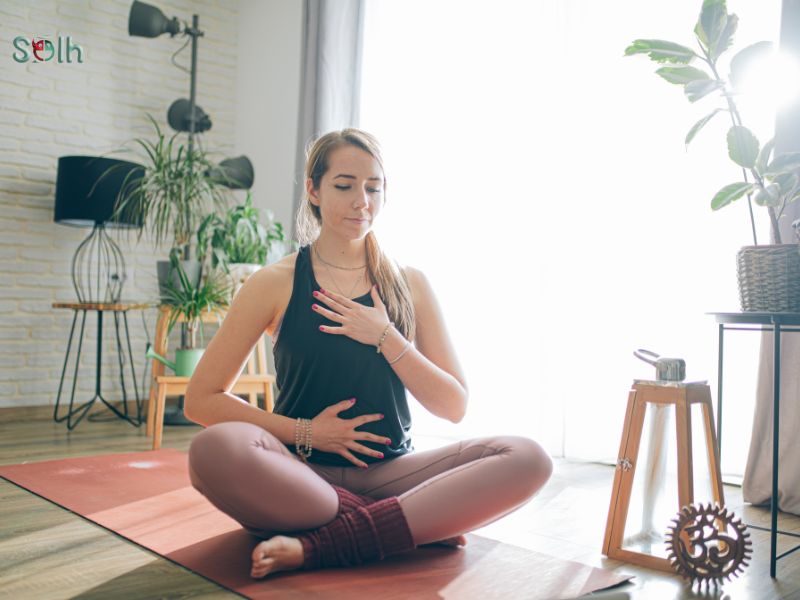Sleep has quietly become a global health crisis. Despite being essential to life, just like food and water, millions struggle to get quality rest. From busy professionals to young students and even retirees, sleep deprivation affects how people feel during the day and how their bodies heal, function, and age.
Poor sleep is linked to a higher risk of anxiety, depression, heart disease, weakened immunity, and memory issues. And while sleeping pills offer a quick fix, they rarely address the root causes. That’s why many are turning to mind-body practices like yoga and breathwork—not just as alternatives, but as deeply transformative tools for long-term, drug-free sleep support.
There are a lot of ways sleep makes you happier , but Yoga and breathwork are the natural remedies for good sleep, which work at a foundational level, helping the body shift from "fight or flight" into "rest and restore" mode. And when the mind calms and the breath deepens, sleep becomes more natural, steady, and healing.
Connection Between Mind & Body
Physically healthy states result from mental and emotional states operating upon one another and vice versa. The physiological effects of this connection are based on the autonomic nervous system.
This system has two key branches:
- The sympathetic nervous system, which handles stress responses (“fight or flight”)
- The parasympathetic nervous system, which supports rest, digestion, and repair (“rest and digest”)
The body needs to move into parasympathetic mode to maintain adequate sleep quality. Even at restful times in modern life, when people spend their time looking at screens and facing too much workload and information overload, tight schedules and chronic stress situations keep them anchored in a sympathetic state.
Practicing yoga along with breath awareness techniques enables humans to activate their natural relaxation response. The change in body state leads to sleep while improving both mental health and physical health at the same time.
What Disrupts Sleep in the First Place?
Sleep improvement requires knowledge about the factors that influence it. The sleep cycle consists of various stages that transform sleep from a single static condition.
- Non-REM sleep, which involves light sleep and deep, slow-wave sleep
- REM sleep, which is associated with dreaming and memory consolidation
A healthy night’s sleep cycles between these stages, allowing the brain and body to recover.
However, various modern factors interfere with this natural rhythm:
- Stress and anxiety can keep the mind racing at bedtime.
- Blue light from screens disrupts melatonin production.
- Caffeine or late meals may interfere with deep sleep.
- Inconsistent routines confuse the body’s internal clock.
- Overstimulation from multitasking and noise keeps the nervous system alert.
As a result, people may fall asleep late, wake up frequently, or feel unrefreshed in the morning—even after a full night’s rest.
How Yoga Supports Better Sleep
Yoga practice before bedtime reduces nervous system activity instead of creating stimulation similar to vigorous exercise. Specified yoga poses trigger a bodily response that causes the nervous system activation of the parasympathetic system, together with a reduction in cortisol levels.
Yoga poses for better sleep:
- Legs Up the Wall (Viparita Karani): This calming inversion reduces pressure in the legs and promotes circulation, signaling the body to relax.
- Child’s Pose (Balasana): This gentle forward bend encourages grounding and introspection, perfect for turning inward at the end of the day.
- Supine Twist: Twisting the spine while lying down helps release tension stored in the back and shoulders.
Research findings indicate that practicing yoga on a regular basis leads people to get better sleep, along with longer rest periods. The combination of slow breathing, low lighting levels, and technology-free surroundings creates maximum effects on sleep quality.
The most beneficial time for practice spans from thirty minutes to sixty minutes prior to bedtime. A brief session of only 10 minutes has the power to alter decisively how the body prepares itself for rest.
The Power of Breathwork for Sleep
During everyday life, breath proves to be an easily accessible mental calmness tool. People typically breathe rapidly and superficially during their daily activities, along with high-stress situations. The nervous system remains attentive due to this mechanism. The brain signals relaxation because of deliberate, slow breaths.
Several breathwork techniques are beneficial for promoting sleep:
- 4-7-8 Breathing
- Inhale for 4 seconds
- Hold for 7 seconds
- Exhale for 8 seconds
This pattern slows down the heartbeat and helps quiet mental chatter.
- Box Breathing (4-4-4-4)
- Inhale for 4 seconds
- Hold for 4 seconds
- Exhale for 4 seconds
- Hold for 4 seconds
Used by athletes and even military personnel to manage anxiety, this method is grounding and effective.
- Alternate Nostril Breathing (Nadi Shodhana)
- A yogic breathing practice that balances both hemispheres of the brain and helps reduce overthinking.
Short practice of breathwork sessions between 5-10 minutes prior to bedtime generates visible changes. Breathwork practice achieves three important effects, which reduce heart rate and lower blood pressure, and facilitate the production of sleep-regulating hormone melatonin.
Creating a Bedtime Routine with Yoga & Breathwork
Consistency is more important than duration. A short, regular nighttime ritual can help “train” the body and mind to wind down naturally.
Here’s a sample 15-minute pre-sleep routine:
- Gentle Yoga (5 minutes)
Try Legs Up the Wall, Supine Twist, or a seated forward fold with slow breathing. - Breathwork (5–7 minutes)
Choose one pattern (like 4-7-8 breathing) and follow it mindfully. - Gratitude or Reflection (3–5 minutes)
Jotting down a few positive thoughts or calming intentions can shift focus from stress to peace. - Environment Setup
Keep the room cool, reduce light, avoid loud sounds, and stay away from screens at least 30–60 minutes before bed.
Over time, this routine becomes a signal, like a soft lullaby to the nervous system—that rest is near.
Real Life, Real Results
Battling insomnia improves significantly when an individual commits to bedtime yoga and breathwork exercises, which show initial effects within seven days. The nighttime body develops heaviness, leading to a more fantastic foundation and reduced sleep disruption.
Persistent insomnia patients describe any minor improvement in their sleep patterns as critically beneficial changes. Despite their incomplete solution potential, the healing process of sleeplessness receives beneficial organic and self-empowering support from mind-body practices.
Accessibility and Precautions
Yoga and breathwork are generally safe, but a few points should be kept in mind:
- Medical Conditions: Those with severe sleep disorders or respiratory issues should consult a doctor before starting a new routine.
- Mobility Limits: Most poses can be adapted. Even seated or bed-based yoga can be beneficial.
- Beginners: It’s okay to start slow. There’s no “perfect” way to breathe or stretch—only what feels gentle and supportive.
If lying on the floor isn’t comfortable, practice on a bed or use props like pillows and blankets. The goal is not perfection but peace.
Sleep Is a Daily Gift, Not a Luxury
The modern culture glorifies hustle, so people tend to disregard sleep. Every human system requires sleep because the most formidable minds and bodies gradually develop breakdowns without it.
The practice of yoga and breath control rebuilds human relations with bodily signals and natural sleep patterns. Through practice, students learn mindfulness while developing patience, and they learn to trust the natural process of surrender.
Those who commit to a nightly ritual often find that sleep becomes not just easier, but deeper and more restorative.
For anyone ready to explore this path, a simple 7-day challenge can be a great start:
- Practice 10 minutes of yoga
- Follow with 5 minutes of breathwork.
- Unplug from technology and allow the mind to settle.
By the end of the week, the body begins to remember what rest feels like—and that, truly, is the beginning of healing.



